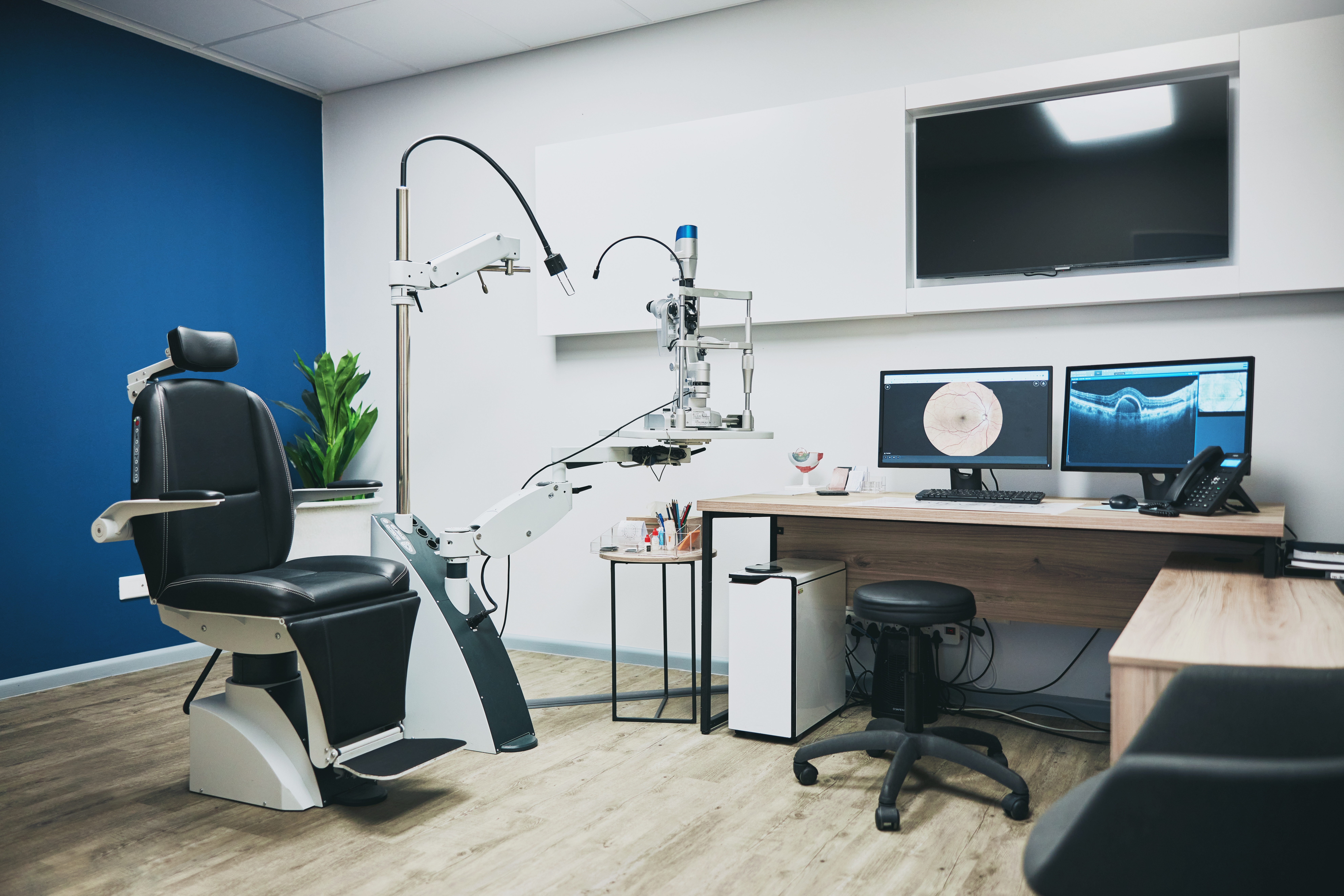‘Consultant Connect is very straightforward and the service ensures that no patients get lost in the system.’
Nicky Jones, Specialist Optometrist in Hywel Dda University Health Board in Wales, has provided ophthalmic Messaging Advice & Guidance (A&G) via Consultant Connect since January 2022.
The service began as an Age-Related Macular Degeneration (AMD) Pathway and has since expanded to incorporate the Diabetic Retinopathy and Glaucoma Optometric Diagnostic and Treatment Centre (ODTC) Pathways.
We spoke with Nicky to find out how setting up these pathways via Consultant Connect has benefited optometrists and patients, as well as her and her team.
Ophthalmology stats*:
More than 4,000 messages have been sent for advice | 99% first-time connection rate | On average, messages were answered in under 6 hours | 68% of the reported outcomes indicate the avoidance of a patient referral
How did the Messaging A&G service originate?
‘The Wet AMD Pathway was set up by our medical retina consultant ophthalmologist. We initially integrated the Wet AMD Pathway onto Consultant Connect, and it was made available to optometrists in Hywel Dda so that when a patient presented with symptoms suggestive of wet AMD, the optometrists could easily send a message for the Medical Retina Team to review. The messaging proforma is very similar to the original wet AMD referral; however, on the Consultant Connect proforma, optometrists, with the patient’s consent, can safely and securely attach fundus images and OCT scans.
‘The team reviewing the queries consists of myself and the consultant ophthalmologist for medical retina. We can assess whether a specialist referral is needed, and, if it is, we can arrange to see the patient. It saves time for everyone involved, and it’s a lot more efficient.’
‘Consultant Connect’s messaging proforma allows us to feed back to the optometrists, advising on a patient management plan. This enables us to interact with the optometrists and, rather than seeing all patients who are referred, we can reduce the volume of unnecessary referrals into the hospital.’
Why did you decide to incorporate the Diabetic Retinopathy Pathway to Consultant Connect?
‘The Diabetic Retinopathy Pathway was set up because we had a large backlog of patients who required a follow-up which hadn’t yet been booked. There were approximately 2,500 patients who were due their follow-up appointment for diabetic retinopathy. We initially triaged the list to decide which patients would be suitable for a Primary Care pathway. Then we contacted optician practices and explained that we wanted the care of some of the patients to be managed by them but with our support. We wanted the optometrists at the optician practices to understand what we’re doing and why, and for them to feel that we’re easily approachable for any questions, and that has worked exceptionally well for us.
‘We recruited around a dozen practices with OCT capabilities and designed a proforma, which our Consultant Connect Account Management Team kindly set up. Starting with the longest waiters, we sent 60-80 invitations per week to patients with a list of practices available via the pathway. We advised them to make a diabetic retinopathy review with one of the practices who would see them on behalf of the hospital.
‘The patient would then attend their chosen practice for an eye examination with dilation, and the optician would fill in the detailed proforma, attaching fundus images and OCT scans.
We know that opticians are often very busy, so we created the proforma to be as straightforward yet comprehensive as possible, adding tick boxes where possible and removing the need for lengthy, in-depth answers.
Of all patients on this pathway, approximately 25% were discharged back to diabetic screening, 25% needed to be seen in the ophthalmic outpatient department (OPD), and 50% were suitable for follow-up in Primary Care.
Implementing this pathway meant that, except for one geographical area, we caught up on our backlog by the end of the year. It has worked very well; patients are seen and assessed closer to home, and only those needing treatment need to come for hospital appointments.’
What are the benefits of providing pathways via Consultant Connect?
‘As a reviewing clinician, it’s very straightforward, and the service ensures no patients get lost in the system. Accessing Consultant Connect in my browser, I can export the cases as a PDF and add it to the patient’s record.
‘Most opticians take photos of the OCT scans or fundus images on their screen with their mobile phone and attach it to the proforma. The beauty is that because it’s done through the Consultant Connect App, it’s secure, and images are not saved to the user’s personal device. The opticians have also said that it’s easy to use, and the photos are of good quality, allowing patient conditions to be easily assessed.
‘The adaptable nature of the proformas and outcomes has been invaluable. It means that our Account Management Team will make tweaks for us as we go, shaping the proforma to elicit the right information from the optometrists so that we can work together collaboratively.
‘We wanted to make the proforma as clean, simple and time efficient as possible, so we asked opticians for feedback and changed the layout based on their comments. The flexibility of our Account Management Team meant that this was done almost instantly; it’s fantastic.
‘One of the reasons why Consultant Connect works so well for us is because our Account Management Team is excellent at responding to questions straight away. There is rarely a technical issue, but if there is, it’s solved so quickly. We’ve found it great because they are a super team. We couldn’t operate in the way we do without Consultant Connect. It has transformed the Diabetic Retinopathy Pathway and made wet AMD referrals much better, more efficient, and visual.’
What advice would you give clinicians who are hesitant to integrate their pathways into Consultant Connect?
‘There are so many benefits that come from doing this. The optician practices appreciate having easy and rapid access to us. If they have a query about an urgent patient, it’s a lifeline.
‘It has improved communication between Primary and Secondary Care, and patient care has become more of a collaboration, which improves the quality of patient services and experiences.
‘The reporting function in the browser is especially useful for reviewing clinicians in a practical sense. We can isolate statistics by practice and see how many patients have been reviewed when matching invoices. If multiple clinicians are reviewing queries, the filter function enables us to see how many queries each clinician has reviewed. In particular, we can see how many patients have avoided a referral or been discharged, and how many patients have required an OPD appointment.
‘The fact that we only need to see 25% of patients referred to us is remarkable and proves how well the system works. It’s made a difference to us, the Health Board and, most importantly, the patients, who are being seen quicker and more efficiently.’
* Data from launch – July 2025.
Please note that statistics within the PDF may differ from those on the website as web content is updated more frequently to reflect the most current data.
Click here to view and download a PDF version of this case study.
Hear from Nicky Jones in the short audio snippets below:
If you have any questions, please get in touch on 01865 261467 or at hello@consultantconnect.org.uk.




